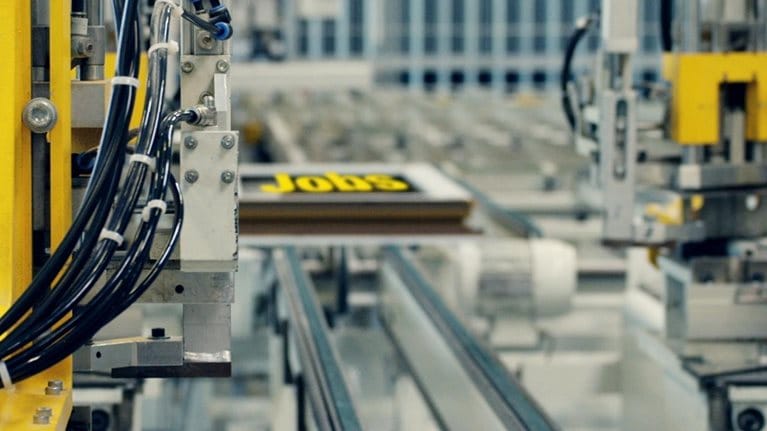The world of work is in flux. Email, video conferencing, and cloud sharing are the norm and millions of people now work in the gig economy, rather than on structured payrolls. But perhaps the greatest debate about the future of work is centered on automation, artificial intelligence, and robotics, and their potential effects on jobs.
Stay current on your favorite topics
Malaysia is knee-deep in this debate—and new McKinsey research finds that governments, businesses, and workers themselves have much to gain from embracing these new technologies. Success is dependent on preparation to ensure people are equipped with the skills needed to thrive. Indeed, our analysis shows that with the right investments in place, Malaysia may well see an increase in net jobs by 2030.
Much is at stake in getting the formula right. Malaysia’s Human Resources Minister recently highlighted Malaysia and ASEAN’s vulnerability to disruption due to their high concentration of labor-intensive manufacturing and service jobs. And though technologies such as advanced robotics and artificial intelligence will boost productivity and help lift GDP growth, their adoption will also inevitably disrupt the nature of work and employment.
Automation: The Malaysian story
In 2017, the McKinsey Global Institute found that about half the activities people are paid to do globally could potentially be automated using technologies that exist today.1 While very few occupations can be automated entirely, about 60 percent of all occupations have at least 30 percent of constituent activities that can be automated.
Importantly, many more jobs will be changed than lost. Less than 5 percent of occupations can be automated in full; rather, we are more likely to see significant changes to the mix of activities that make up a work day.
Some of the biggest changes will occur in jobs that require routinized physical activity in a predictable setting, such as operating machinery or preparing food. About 50 percent of the work time in Malaysia is spent on these types of highly automatable activities (Exhibit 1). This could significantly alter large amounts of labor; for instance, in mortgage origination, paralegal work, accounting, and back-office transaction processing.

The pace and extent of automation will vary by country. Determinant factors include the technical feasibility of automation; the cost of developing solutions; labor market dynamics; regulatory and social acceptance; and more.
However, using our midpoint scenario of automation adoption, we find that automation could displace up to 25 percent of hours, or 4.5 million equivalent workers, in Malaysia by 2030.

Jobs lost, jobs gained: What the future of work will mean for jobs, skills, and wages
Many more jobs created than could be lost to automation
Yet Malaysia’s jobs outlook is ultimately promising, as these job losses will be more than offset by new labor demand. Three factors are expected to drive job creation: first, rising consumer incomes and their impact on consumer goods; second, increased education spending; and third, an aging population that will create new demand for a range of occupations, including doctors, nurses, and personal care aides. These factors alone have the potential to create the equivalent of 3.3 million full time jobs.
A further 1.7 million jobs could be created if policy makers and businesses make higher investments in energy transitions, infrastructure and real estate, and technology. For example, investments in renewable energy or energy efficiency technologies may create demand for new workers in manufacturing, construction, and installation. Increased spending on infrastructure could create jobs in architecture, engineering, carpentry, or machine operation.
An additional one million jobs could be yielded in fields we cannot yet predict, but which we know from historical precedent can be created. One study found that each year, 0.56 percent of new jobs in the United States are in occupations that did not exist the prior year—that is, 18 percent of today’s American workforce are employed in an occupation that did not exist in 1980.2 Just as the job of a search engine optimizer or a mobile app designer could not have been predicted in a pre-Internet era, we cannot foresee the new work activities, or combinations thereof, that will arise in the future.
Taking these factors into account, we find that up to 6 million new jobs could be created by 2030—that is, some 1.5 million net new jobs (Exhibit 2).

These additional jobs will be especially important for Malaysia given its expanding population and an estimated 17.8 million workers in the labor pool by 2030. The net increase in new jobs will be crucial at a time when more people will be joining the labor market.
While employment will be created across sectors in Malaysia, we expect the mix of those jobs to change. In particular, jobs will shift away from manufacturing and into services (Exhibit 3). The biggest net increase in hours will be for work that involves physical activities in unpredictable environments, followed by work that requires applying expertise, interacting with stakeholders, and managing people. Some of the strongest growth will be found in sectors such as construction, education, and health care.

Additionally, we find that an increasing percentage of jobs will require college and advanced degrees, emphasizing the need for a skills upgrade in the current workforce.
Futureproofing our workforce and businesses
All stakeholders must be proactive about managing this inevitable transition to the new future of work. The effect of automation will be twofold. First, it will displace some individual workers. Second, it will create a new mix of tasks and activities for almost everyone in the workforce.
A key challenge moving forward will be that of worker retraining or reskilling—in line with rising demand for not just technological skills of all kinds, but also for social and emotional skills (that is, leadership or empathy with customers), as well as for higher cognitive skills linked to creativity, complex information processing, and problem solving.
Many in the private sector are taking steps to fill current skill gaps by providing educational assistance. AT&T offers all of its employees opportunities to enroll in an online computer science program at Georgia Tech University, which AT&T helped set up. Walmart, the world’s largest private-sector employer, has set up an in-house Walmart Academy that trains associates through on-the-floor and traditional classroom instruction. Governments are also increasing their focus on reskilling.
Malaysia recently launched SkillsMalaysia 2.0, an outreach program that aims to boost participation in Technical and Vocational Education and Training (TVET). Today, participation in TVET is currently at 80 percent of the program’s capacity.3
Elsewhere in Southeast Asia, Singapore’s SkillsFuture Initiative provides all Singaporeans aged 25 and above a credit to pay for approved work-skills related courses. Within one year of its introduction, more than 120,000 people had taken a course through the initiative, more than 60 percent of them older than 40.
Beyond re-training and upskilling initiatives, a range of policies can help, including unemployment insurance, public assistance in finding work, and portable benefits that follow workers between jobs. In Sweden, employers pay into private sector “job-security councils” which provide laid-off workers with financial support and job counseling, with the aim of helping them get back to work as soon as possible.
Malaysia may also need to consider stepping up investments that contribute to demand for work, such as spending on infrastructure, education, healthcare, and climate change adaptation. Public-private-partnership models can and should be leveraged to stimulate investments in these sectors.
It is also important that the curriculum in schools be closely monitored to ensure it supports the needs of tomorrow. Though there is an urgent need for more science, technology, engineering, and mathematics skills, schools also need to place an increased emphasis on creativity, critical and systems thinking, and adaptive and life-long learning.
Companies must start planning for (and transitioning into) the future of work now—with long-term learning programs for people whose jobs are changing today, alongside those whose jobs will change in the future. Greater fluidity will be needed in the labor market to manage the difficult transitions we anticipate. Digital talent platforms, such as LinkedIn or Indeed.com, can foster this by matching workers with companies seeking their skills, and by providing a plethora of new work opportunities for those open to taking them.
And though the number of Malaysians currently employed in sectors such as information technology and its deployment are small compared to those in healthcare or construction, these are industries that offer higher wages and are growing at a steady pace both in Malaysia as well as around the world. Workers should have these future-ready skillsets and industries on their mind as they prepare themselves for the workplaces of tomorrow.
Re-skilling and job redesign undoubtedly come with a price, but it is a price worth paying. There is no benefit in seeking to slow down the diffusion of automation. Instead, we need to focus on making sure our workers have the right skills they need to thrive in the automation era: an era in which adaptability and continuous learning will be the keys to success.


